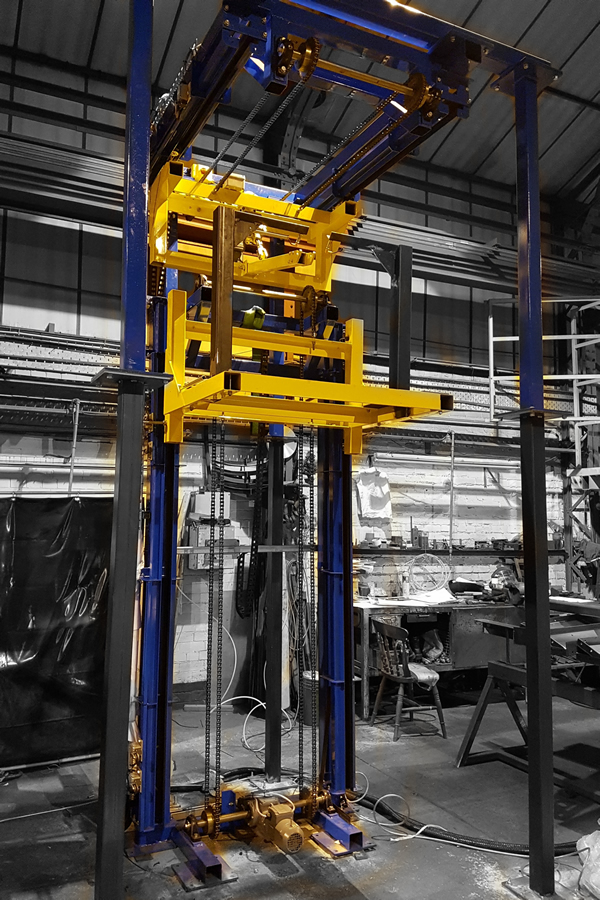Top Lift Companies in London: Offering High Quality Installations and Upkeep
Top Lift Companies in London: Offering High Quality Installations and Upkeep
Blog Article
Looking Into the World of Elevators: Common Issues Encountered by Different Lift Mechanisms
As we browse with the upright transport systems of modern structures, elevators stick out as a vital component of our every day lives. Nonetheless, behind their seamless procedure lies a globe of detailed mechanisms that can in some cases run into difficulties. From hydraulic lifts to traction systems and machine-room-less styles, each lift kind includes its set of common issues. Understanding these obstacles is essential for making certain the smooth functioning of these important systems. Let's check out the intricacies that underlie the operation of elevators and the possible issues that can emerge, clarifying the complex web of lift mechanisms.
Hydraulic Lifts
Hydraulic elevators, commonly chosen for low-rise structures, utilize fluid pressure to manage the activity of the elevator automobile (lift repair companies). This mechanism includes a hydraulic pump pushing oil right into a cyndrical tube, causing the lift to relocate in the preferred direction. While hydraulic elevators are known for their peaceful and smooth procedure, they do include their very own set of common concerns
One widespread issue with hydraulic elevators is oil leak. In addition, concerns with the control system, such as damaged valves or a malfunctioning pump, can trigger disturbances in the lift's activity.
Regular upkeep and prompt repairs are vital to ensure the smooth performance of hydraulic lifts. By resolving these typical problems proactively, building owners can minimize downtime and make certain the safety and efficiency of their vertical transportation system.
Traction Lifts
When taking into consideration vertical transportation systems in structures, one more usual type aside from hydraulic elevators is the grip lift. Grip lifts operate utilizing a system of ropes and weights that relocate the lift cars and truck by clutching onto the hoist ropes. This device permits smoother and much faster upright transport contrasted to hydraulic systems.
Among the typical issues encountered by traction lifts is rope wear. The constant motion of the ropes within the grip system can bring about damage gradually, potentially creating the lift to malfunction or come to be harmful for usage. Routine inspections and upkeep of the ropes are important to make sure the elevator's appropriate performance and safety and security.
One more problem that traction lifts might experience is related to the control system. Problems with the control system can cause concerns such as irregular movement, delays in response times, or perhaps complete shutdowns. Normal screening and maintenance of the control system are critical to prevent such concerns and make certain the elevator's dependability.
Machine-Room-Less (MRL) Lifts

One of the essential parts of MRL lifts is the small gearless grip see equipment that is mounted within the hoistway. This device effectively drives the lift vehicle without the requirement for large equipment discovered in standard traction elevators. Additionally, MRL elevators usually use a weight system to balance the vehicle, further improving their energy performance.
Regardless of their benefits, MRL elevators may face difficulties related to upkeep and repair due to the constrained room for tools installation. Availability for servicing elements within the shaft can be restricted, calling for specialized training for service technicians. Correct upkeep schedules and normal examinations are crucial to make certain the ongoing smooth procedure of MRL lifts.
Overloading and Weight Limit Issues
Are elevators geared up to manage excess weight lots effectively and safely? Overwhelming and weight limit issues are vital concerns in lift operations. Lift suppliers design raises with certain weight capabilities to ensure traveler security and equipment long life. Exceeding these weight limits can result in numerous problems, consisting of mechanical failures, delays, and safety and security risks.
When lifts are overwhelmed, it places too much stress on the electric motor, wires, and other components, potentially creating breakdowns or breakdowns. Safety and security devices such as sensing units and overload sensors are in location to stop lifts from moving if they discover excess weight. Furthermore, exceeding weight limitations can lead to enhanced energy usage and wear and tear on the lift system.
To minimize overwhelming concerns, building managers must plainly display weight limitations in lifts and enlighten occupants on the significance of adhering to these constraints - lift repair companies. Normal maintenance checks by certified service technicians can likewise help make sure that lifts are running within risk-free weight parameters. By addressing overloading and weight restriction issues proactively, structure proprietors can enhance lift security and effectiveness
Electrical System Failures
Going beyond weight restrictions in lifts can not just check over here lead to mechanical problems however likewise potentially contribute to electrical system failings within the lift facilities. Electric system failures are an important problem in lift operation, as they can create unanticipated closures, malfunctions, or even safety anchor threats.
Routine upkeep and evaluations are essential to recognize and deal with possible electrical concerns without delay, making sure the reliable and secure operation of lift systems. By adhering to weight limitations and carrying out regular electric system checks, building owners can minimize the threat of electrical failures in lifts.
Final Thought

Hydraulic lifts, commonly chosen for low-rise structures, utilize fluid pressure to control the motion of the elevator vehicle.When taking into consideration vertical transport systems in buildings, an additional common kind apart from hydraulic elevators is the grip lift. Traction lifts operate utilizing a system of ropes and weights that move the lift automobile by gripping onto the hoist ropes. Unlike typical elevators that need a different device area to house the equipment, MRL elevators incorporate many of the components within the shaft, removing the need for a committed device space.In verdict, elevators deal with typical concerns such as hydraulic malfunctions, grip system failures, and electric system troubles.
Report this page